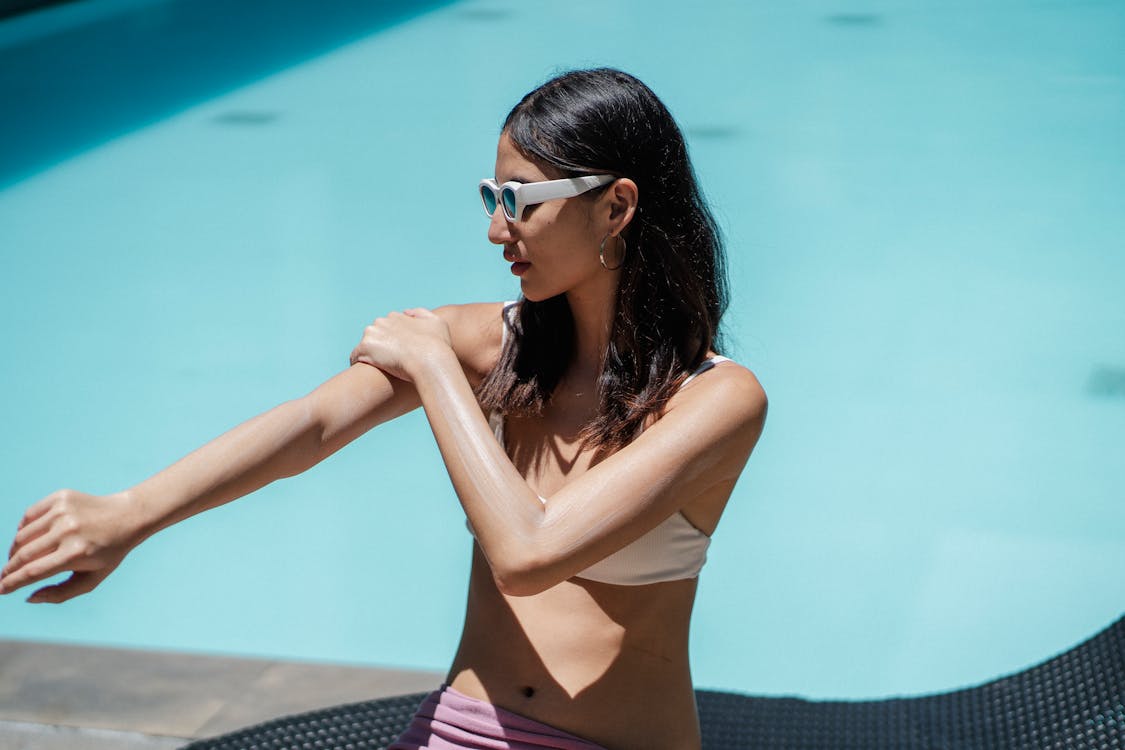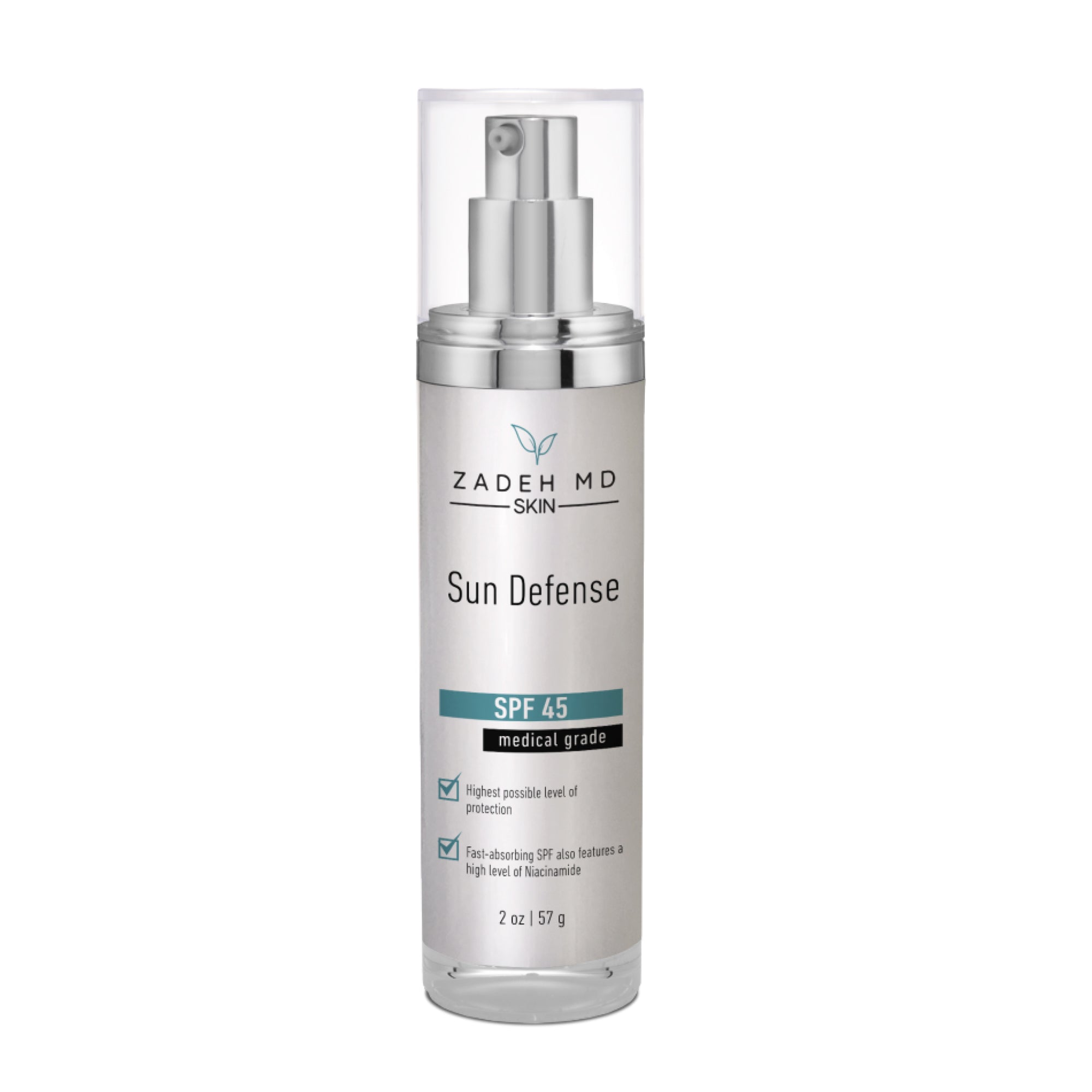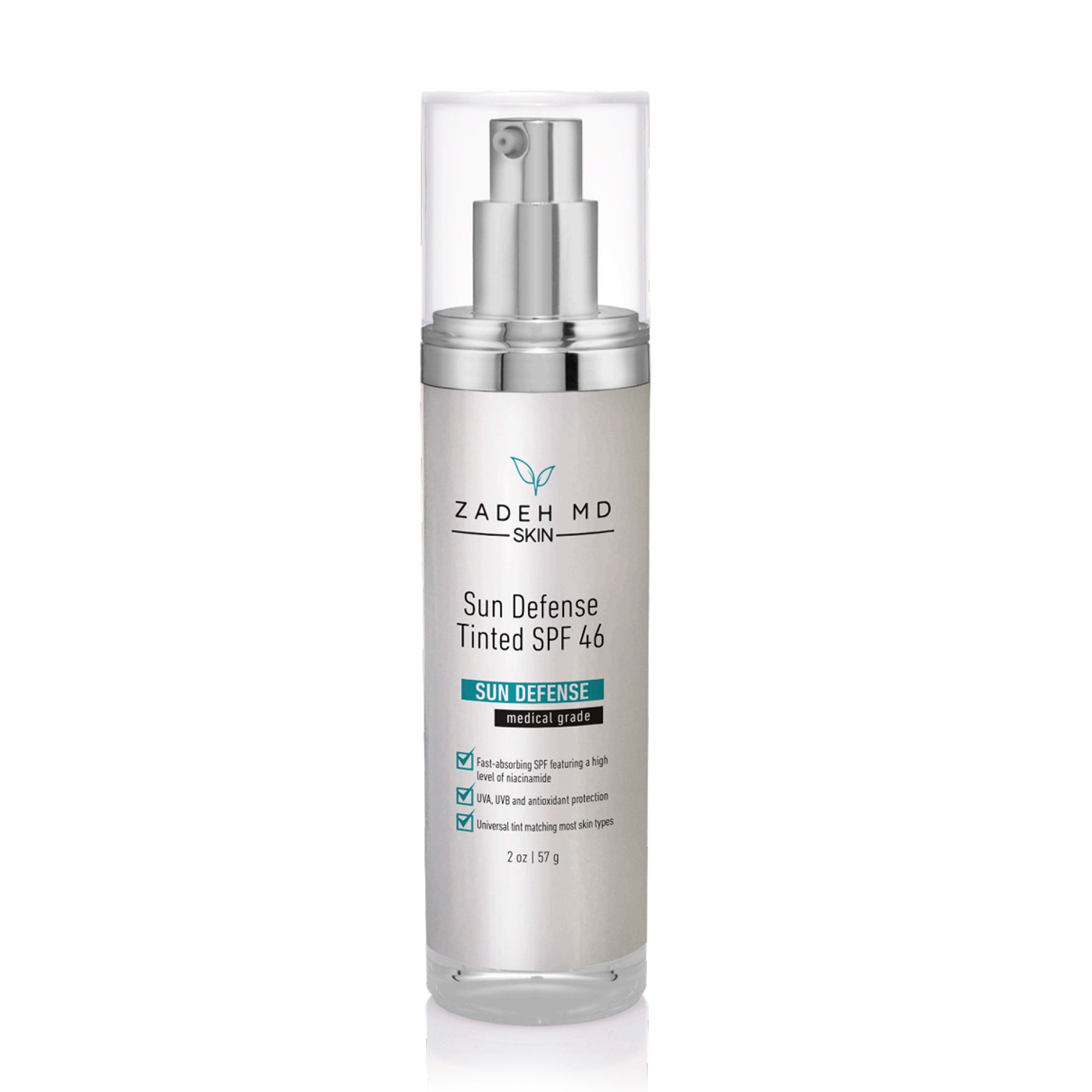According to The Skin Cancer Foundation, 1 in 5 Americans will be diagnosed with skin cancer before they turn 70. Globally, there are more than 300,000 new cases of skin cancer each year. You’ve probably heard it before, but it bears saying again. Wearing sunscreen is the best way to protect yourself from the damage that sun exposure can cause. This guide will tell you everything you need to know about sunscreen, specifically SPF, and why it’s a vital part of your daily routine.
UVA vs. UVB

Both UVA and UVB rays can damage the skin, and both are forms of ultraviolet radiation. While there is certainly a full range of benefits from getting outside into the sunshine, it’s imperative that you protect your skin when you do so. Let’s find out more about protecting yourself from both UVA and UVB rays.
UVA Rays
The energy from UVA rays can reach the inner layers of your skin, causing cell damage, which can lead to cancer. At the same time, these rays contribute to the signs of premature aging, such as dark spots, fine lines and wrinkles.
UVB Rays
Because UVB rays have shorter wavelengths than UVA rays, they mainly penetrate the outer layer of your skin, or the epidermis. This can lead to sunburn, which is a major contributor to the subsequent development of cancer. UVB rays can also lead to blisters, which is also linked to a greater incidence of skin cancer.
What is SPF?
The best way to protect your skin from the damage of both UVA and UVB rays is to wear sunscreen anytime you spend time outdoors. SPF, or sun protection factor, refers to the amount of energy from the sun that is needed to cause a sunburn on protected skin. As you can likely assume, the higher the SPF, the more protection offered.
What to Know About SPF
A common misconception is that the SPF refers to the time expected from the level of protection offered by the SPF. For example, SPF is sometimes thought to offer 15 hours of protection. This is untrue and this misunderstanding puts you in danger of sun damage. SPF relates to the amount of solar exposure, not the amount of time of exposure. While the time of day does impact solar energy, there is also the solar intensity to take into consideration when choosing SPF products for your sun protection needs.
You can assume that midday solar energy is much higher and more damaging than that in the early morning or evening. Geography also plays a role in solar energy, as places nearer the equator experience much more than other locations. Solar energy is also greater on sunny days than on cloudy days.
The amount of solar energy absorbed is also related to skin type, how much sunscreen is applied, and how often it’s reapplied. Some with a lighter skin tone will absorb more solar energy than those with darker skin tones. Likewise, a thicker application of SPF offers more sun protection than a lighter layer and reapplying according to the product’s instructions offers more protection than a single application.
How is SPF Calculated?
While SPF gives you a pretty good idea of how much sun protection you can expect from a given product, it’s important to know that it’s tested in controlled situations, which don’t always exactly mimic real-world use. Despite this, you can typically rely on the SPF of a product when determining whether it’s suited to your needs.
It’s also important to note that the SPF is accurate only when applied evenly and liberally to all exposed areas of your skin. Again, the higher the SPF, the more protection the product offers from both UVA and UVB rays. The following are some general guidelines:
- SPF 15 shields skin from 93% of UVB rays
- SPF 30 blocks nearly 97%
- SPF 50 blocks 98%
- SPF 100 blocks 99%
Another way to calculate SPF is to look at the number as a fraction. For example, SPF 30 allows only 1/30th of the sun’s rays through to your skin. SPF 50 allows only 1/50th of the rays to penetrate your skin. There are pros and cons to higher SPF products, which we will learn more about later. However, if you are planning to spend time outside, you can assume that adding sunscreen to your daily skincare regimen is going to be an important way to protect yourself from sun exposure and the skin damage it can cause.
Understanding Sunscreen

If you’ve ever stood in the skincare aisle at your local beauty supply store, you’ve probably experienced the overwhelm that comes with the sheer number of choices of sunscreen. Learning more about the options can help you choose the product that is best suited to your skincare needs.
In general, there are three main criteria to look for:
- A broad-spectrum sunscreen – protects against both UVA and UVB rays.
- SPF 30 or higher – this recommendation comes from the American Academy of Dermatology.
- Water resistant – sunscreen will stay in place for up to 80 minutes in the water.
Waterproof vs. Water Resistant
As noted above, your sunscreen should be labeled as “water resistant,” or “very water resistant.” These products are designed to stay in place without compromising their effectiveness, even if you are in the water or sweating heavily.
In the past, the term “waterproof” was used, but is now deemed misleading because any sunscreen will eventually wear off in the water after a given time frame. In the United States, the Food and Drug Administration no longer allows products to be labeled as “waterproof” or “sweatproof,” to keep consumers from assuming the product will last for an entire day, regardless of how much water or sweat it’s exposed to.
When you choose a sunscreen, be sure you are aware of the length of time the sunscreen stays water resistant. That way, you can reapply accordingly to ensure continued protection for your skin against UV rays.
Chemical vs. Physical vs. Hybrid
Sunscreen is typically made with one of two skin barriers or UV filters. Physical filters, which are often referred to as mineral sunscreen, or chemical filters, usually called chemical sunscreen. As you have likely deduced, a hybrid sunscreen is a mixture of the two. Let’s look at them a bit more closely.
Physical Sunscreen
This kind of sunscreen works by creating a barrier on the skin that blocks the sun’s rays. Physical sunscreens offer broad-spectrum protection and reduce the risk of sunburn, skin damage and signs of aging that are attributed to sun exposure. The two main ingredients used in mineral sunscreen are titanium dioxide and/or zinc oxide.
Chemical Sunscreen
Rather than providing a physical barrier on the skin, chemical sunscreen contains active ingredients that absorb the sun’s rays before they penetrate the skin. The most common of these include oxybenzone, avobenzone, octisalate, octocrylene, homosalate or octinoxate. If you have sensitivities to any of these ingredients, it’s best to choose an alternative.
Hybrid Sunscreen
As the name implies, a hybrid sunscreen contains both chemical and physical properties. They often incorporate the high effectiveness of a mineral sunscreen with the lightweight and cosmetic perks that a chemical product offers. In other words, they reflect the sun’s rays at the same time that they absorb them, offering a new method for sun protection.
Reasons to Wear Sunscreen Every Day
No matter the season, no matter the weather, if you are going to be outside, you should be wearing sunscreen. That means every single day, not just during the summer months. The risk of skin cancer exists even on cold, cloudy days and you increase your chances each time you forgo sunscreen. For that reason, adding daily sunscreen to your skincare routine is a must. Here are even more reasons to apply it regularly.
Protects Against Sunburn
Even just one sunburn elevates the risk of developing skin cancer in the future. Wearing sunscreen is one of the best ways to prevent sunburn from happening. Each time the skin absorbs UV light and sunburn occurs it causes changes to your genetic material that can damage your skin cells, resulting in the formation of cancer.
Protects Skin Against Inflammation
Time in the sun can put your skin at risk of redness and inflammation. By wearing sunscreen, you keep it safe from this at the same time that you are blocking UV rays and reducing your chances of developing cancer.
Keeps You Looking Young
Prolonged and excessive sun exposure without protection can lead to premature aging as it damages the delicate skin on your face and other sensitive areas. To avoid fine lines, wrinkles and age spots, wearing sunscreen is a must. A sunscreen formulated specifically for the face is a good investment and will help you preserve your youthful and radiant skin, no matter your age.
Evens Skin Color
Too much time in the sun can lead to hyperpigmentation and dark spots. These spots can appear on the face or the hands, and you guessed it – sunscreen lowers the risk and helps your skin stay even, balanced and glowing.
How to Choose a Facial Sunscreen
The skin on your face is thinner and more delicate than that on the rest of your body. Many people also have sensitive skin on their face, neck and jaw. For these reasons, choosing a sunscreen that targets the face specifically is a good idea. Most experts suggest a lotion or cream over a spray or stick because you can get every nook and cranny on your face, including your ears, under your jaw and in the folds near your nose. Use the following advice to find the right facial sunscreen for you.
- Choose non-comedogenic or mineral products if you have oily or acne-prone skin.
- Find a sunscreen with hyaluronic acid or ceramides if you suffer from dry skin on your face.
- Avoid mineral sunscreens if you have dark skin.
The Zadeh MD Skin product line, formulated by Dr. Michael Zadeh, is a range of quality skincare products including two sunscreens.
Sun Defense SPF 45 is a lightweight sunscreen that provides the skin anti-aging protection from UVA, UVB & infrared radiation. Its flavonoid-rich knotweed-extract-based formula with a high concentration of niacinamide provides daily nourishment for a youthful, clear complexion.
Sun Defense Tinted SPF 46 is ideal for those who prefer a little color in their sunscreen or have oily/acne-prone skin, Lightweight and oil-free and based on the same knotweed extract as the Sun Defense SPF 45, the tinted sunscreen offers broad-spectrum protection. Its vitamin E content delivers antioxidants and it delivers a replenishing hit of moisturization from hyaluronic acid.
How to Choose a General Sunscreen
As mentioned above, the three main things to look for when you choose sunscreen are:
- Broad spectrum
- SPF 30 or higher
- Water-resistant
Beyond this, you can choose a product based on your skin type and personal preferences. For example, those with darker skin don’t always like the visible barrier that mineral sunscreen provides, while those with sensitive skin may experience a reaction from using chemical sunscreen. You may have to try several sunscreen products to find the one that you like best.
How to Apply Sunscreen
Now that you know how to choose sunscreen and why you should be wearing it every day, let’s talk about the right way to apply it. Getting the most out of the product relies heavily on correct usage, so follow these tips to get it right every time.
- Apply 15 minutes before going outside to give the product ample time to absorb and activate.
- Wear at least 1 ounce of sunscreen, distributed evenly over all exposed skin. You may need more or less, depending on your size and the clothing cover that you have.
- Be sure to get all exposed skin – ears, neck, face, hands, tops of the feet, backs of the legs, etc. You should also apply sunscreen to the scalp if you have thinning hair or are bald and are not planning to wear a hat.
- Reapply sunscreen every two hours or anytime you get out of the water.
- Be sure your sunscreen isn’t expired as the ingredients tend to degrade and don’t offer the expected level of protection.
Remember, you need sunscreen every day, even when it’s cloudy.
Other Ways to Protect Yourself from the Sun

In addition to wearing sunscreen every day, there are other measures you can take to lower your risk of skin cancer and keep your skin feeling and looking healthy.
- Wear lightweight long-sleeved shirts and pants.
- Choose sunglasses that offer UV protection.
- Put on a wide-brimmed hat.
- Opt for shoes that cover your feet.
- Seek shade whenever possible.
Conclusion
Wearing sunscreen should be a natural part of your daily skincare routine. Even if the only time you will be outside is driving to and from work, you need protection for your exposed skin, especially the hands and face. Taking preventative measures now means less risk of skin cancer when you get older.









